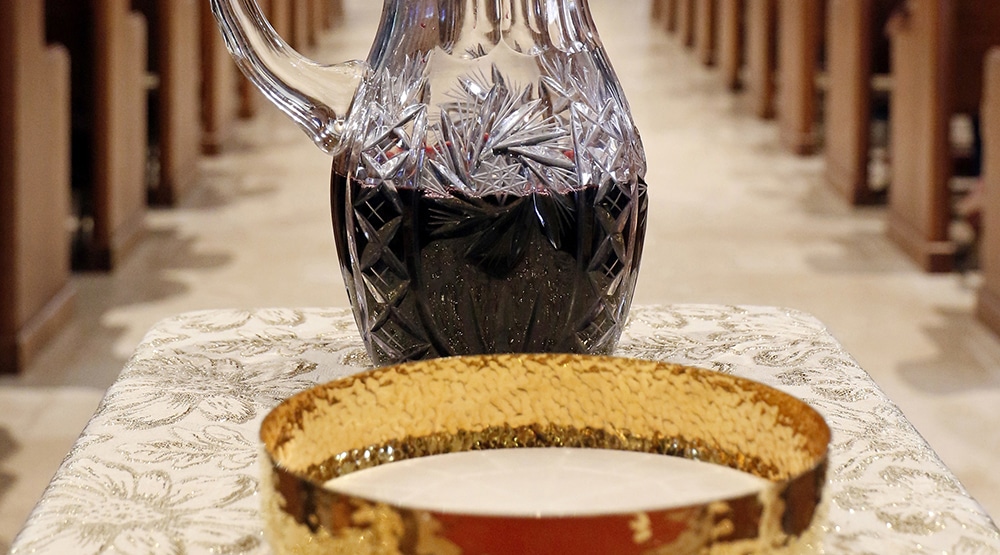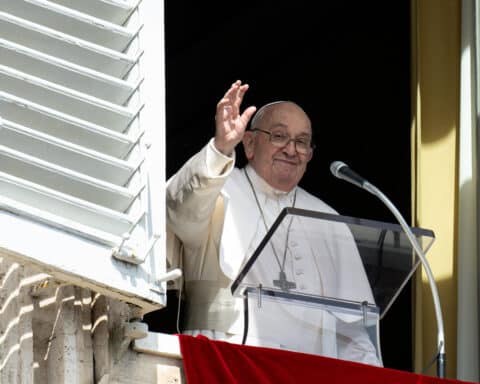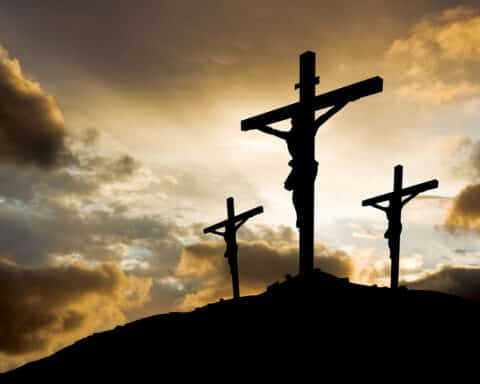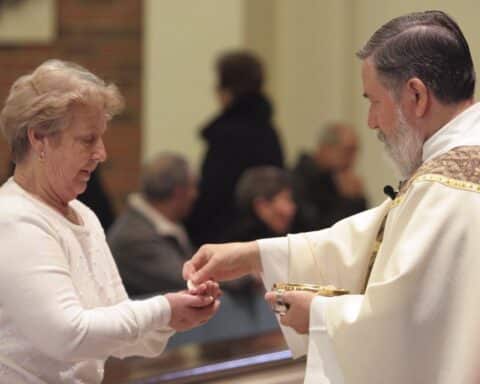
— Name withheld via email
Answer: No. Other than the priest, a Catholic is not required to receive the Eucharist under both species, thus no sin is incurred in not partaking from the chalice.
The Catechism of the Catholic Church states: “Since Christ is sacramentally present under each of the species, Communion under the species of bread alone makes it possible to receive all the fruit of Eucharistic grace. For pastoral reasons this manner of receiving Communion has been legitimately established as the most common form in the Latin rite. But ‘the sign of Communion is more complete when given under both kinds, since in that form the sign of the Eucharistic meal appears more clearly.’ This is the usual form of receiving communion in the Eastern rites” (No. 1390).
Thus, although receiving under both forms is commendable, it is not required to do so, because the whole Christ is received under one form alone. Further, it is not always logistically reasonable for both forms to be offered at every Mass.
There are also cases where one cannot receive the host (due, perhaps, to celiac disease), and such persons therefore can receive Communion from the chalice of the precious blood. In the same way, they receive the whole Christ, as do those who receive only the host.
You also wonder about the meaning of Jesus’ words, “Unless you eat the flesh of the Son of Man and drink his blood, you do not have life within you” (Jn 6:53). Here, too, it must be emphasized that in receiving the host, we receive the whole Christ: body, blood, soul and divinity. Jesus is not divided up in holy Communion. He is fully present in the smallest particle of the host and the smallest drop of the precious blood. Thus in receiving the host you also are partaking of his blood, as he commands.
Shape of the cross
Question: A Jehovah’s Witness I know insists that Jesus Christ did not die on the cross but was hanged on a pole. She claims that it was Catholics who said he was nailed on a cross.
— Name withheld via email
Answer: It is a rather strange obsession with some of the Jehovah’s Witnesses to insist that Christ was not nailed to a cross but fixed on something more resembling a gibbet.
It is true that terms used in the New Testament of the structure on which Jesus died are stauros and xylon. These words can mean a pole or stake. But they also can refer to many different things and do not indicate a precise shape of the structure used.
However, more than a linguistic matter determines what structure is described here. The texts of the New Testament speak of Jesus as being “crucified” by the Romans. And the practices of the Romans in crucifixion are not unknown to us. A simple pole was not normally used. Rather a crossbeam was most commonly affixed to poles already set in the ground. And while practices may have varied a bit, the general process of crucifixion involved a T-shaped or cross-shaped design.
The evidence could go on. But in the end, it seems a strange errand to insist that it was a gibbet. Does it really matter? The tradition is consistent that the T-shaped cross likely was used, but our salvation does not depend on the shape of the cross.
Msgr. Charles Pope is the pastor of Holy Comforter-St. Cyprian in Washington, D.C., and writes for the Archdiocese of Washington, D.C. at blog.adw.org. Send questions to msgrpope@osv.com.





